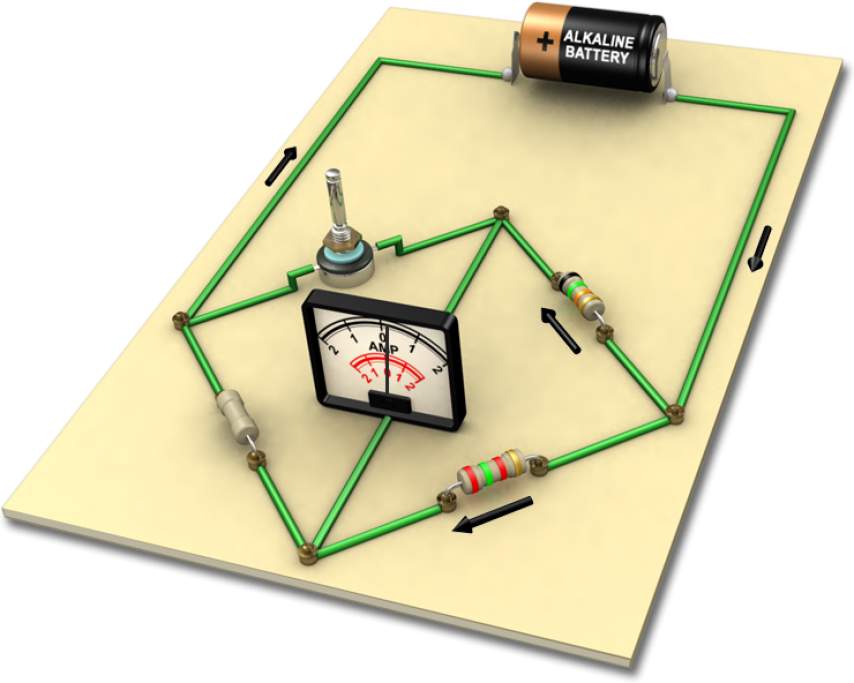Position:Home » Industry News
How Precision Resistors Used for Strain Gage Sensors
Writer:Microhm Page View:Date:2019-10-24
Strain gages are fundamental sensing devices that function as the building blocks of many other types of transducers—including pressure, load, and torque sensors—used extensively in structural test and monitoring applications. An example of such a transducer is a load cell that converts a mechanical force to an electrical output signal. In these designs, gages are connected as a Wheatstone bridge, resulting in an accurate and rugged transducer that can operate in extreme environments.

To achieve accuracy, the Wheatstone bridge is adjusted for manufacturing initial tolerance and ambient and self-heating temperature effects. "Compensation" high precision resistors are then added to correct for bridge unbalance, and to adjust the output sensitivity. Other compensation resistors correct for the errors that result when the transducer is used over a widely changing temperature range. Even though strain gages are very common, acquiring reliable data from them can be a challenge.
Several factors can affect the measurement performance of a strain gage: the signal conditioning, the construction and location of the Wheatstone bridge (the most common bridge type used to measure resistance), inductance and capacitance, the precision resistors used in the circuit, and the excitation source. Precision resistors have two basic uses in standard strain gage circuits: shunt calibration of strain measuring instruments and bridge completion. In shunt calibration, a fixed high-precision resistor is temporarily shunted across one of the bridge arms to produce a known and controlled resistance change in the bridge circuit. The resulting instrument indication is then compared to the calculated strain corresponding to the resistance change.

In bridge-completion, a precision resistor is used in the adjacent arm of the Wheatstone bridge, and two additional precision resistors are used in the ratio arm. to complete the external half-Wheatstone bridge circuit when a single strain gage is connected in a quarter-Wheatstone bridge arrangement. In each of these applications, the accuracy of the strain measurement is affected, directly or indirectly, by the accuracy and stability of the precision resistors used in the circuit. That’s why only the highest-precision, highest-stability resistors should be used; the choice is basically include Microhm Electronics' high precision metal foil resistor MVR Series, MPR Series and NMS Series.

To achieve accuracy, the Wheatstone bridge is adjusted for manufacturing initial tolerance and ambient and self-heating temperature effects. "Compensation" high precision resistors are then added to correct for bridge unbalance, and to adjust the output sensitivity. Other compensation resistors correct for the errors that result when the transducer is used over a widely changing temperature range. Even though strain gages are very common, acquiring reliable data from them can be a challenge.
Several factors can affect the measurement performance of a strain gage: the signal conditioning, the construction and location of the Wheatstone bridge (the most common bridge type used to measure resistance), inductance and capacitance, the precision resistors used in the circuit, and the excitation source. Precision resistors have two basic uses in standard strain gage circuits: shunt calibration of strain measuring instruments and bridge completion. In shunt calibration, a fixed high-precision resistor is temporarily shunted across one of the bridge arms to produce a known and controlled resistance change in the bridge circuit. The resulting instrument indication is then compared to the calculated strain corresponding to the resistance change.

In bridge-completion, a precision resistor is used in the adjacent arm of the Wheatstone bridge, and two additional precision resistors are used in the ratio arm. to complete the external half-Wheatstone bridge circuit when a single strain gage is connected in a quarter-Wheatstone bridge arrangement. In each of these applications, the accuracy of the strain measurement is affected, directly or indirectly, by the accuracy and stability of the precision resistors used in the circuit. That’s why only the highest-precision, highest-stability resistors should be used; the choice is basically include Microhm Electronics' high precision metal foil resistor MVR Series, MPR Series and NMS Series.
Keywords:
Latest News
- Resistor's role in measuring and correcting LED,,,
- Single through-hole resistors' characteristics ,,,
- Why shunt resistors for current sense applicati,,,
- Metal-film resistors with small size, high resi,,,
- 36W High-Current Shunt Resistors MMS8420,,,
- 1W Surface Mount Resistor MPR1206,,,
- An Overview of Microhm Electronics' Resistor Pr,,,
- More anti-sulfur resistors used in harsh envir,,,
- Resistance changes with temperature,,,
- 140W TO247 High Power Heatsinkable Resistor,,,
- MMS5930 is ideal for current sensing in industr,,,
- Shunt resistors selection for engineers' design,,,
- Considerations for choosing precision resistors,,,
- Ceramic Encased Cement Resistors NWH Series for,,,
- Resistors for Passive Balancing in Battery-Pow,,,
Hot Articles
- Microhm will take part in 10th Automotive World,,,
- Thanks for Visiting Microhm's Booth E5-5706 in ,,,
- Resistors in Short Supply: Blame Cars,,,
- New lunch: High Power Precision Shunt Resistor,,,,
- How to Test a Resistor,,,
- Innovative Technology, Future Electric: Electri,,,
- What is Precision Resistors?,,,
- SMD Resistors Sizes and Packages,,,
- The Construction and Features of Metal Film Res,,,
- What is a TO-220 Resisor?,,,
- Hot Selling Products: Precision Shunt Resistors,,,
- How to Calculate the Equivalent Resistance Valu,,,
- What is a Fixed Resistor?,,,
- Resistors in LED Circuits,,,
- Resistors Types and Materials Overview,,,
Resistance applications
- Miniature future for passive electronic compone,,,
- Surface Mount Resistor's Size and Package ,,,
- BMS for New Energy Vehicle,,,
- The Measurement Accuracy of Automotive Shunt is,,,
- Heater Blower Motor Resistor in Air Conditioner,,,
- Precision Resistors' Construction and TCR,,,
- The Four Important Functions of Alloy Resistors,,,
- Select the Right Resistor for Harmonic Filterin,,,
- Difference Between High Precision Resistors and,,,
- The Main Application for High Precision and Low,,,
- Why Zero-Ohm Resistors?,,,
- Shunt Resistor MMS8420 for High Current Stable ,,,
- Carbon Film Resistors' Features and Application,,,
- Industrial Roberts Applied to Solar Photovoltai,,,
- Urbanization Development Bringing the Transform,,,
